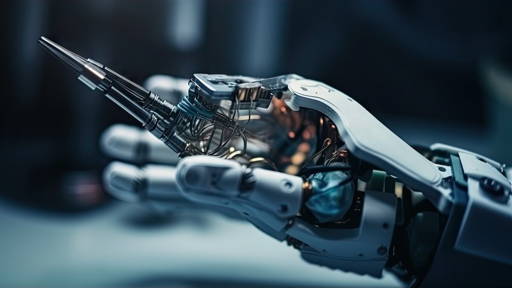The Dutch St. Antonius Hospital in Utrecht recently acquired a new employee: the Swiftbot. This new logistics robot collects material from various outpatient clinics that needs to be taken to the Nieuwegein location for pathological examination. This gives the human employees more time for other important tasks.
The robot makes a fixed round through the hospital in Utrecht, three times a day, to collect (cell)tissue that needs to be taken to the Pathology department in Nieuwegein for examination. For example, a biopsy of a mole needs to be collected from the Dermatology outpatient clinic. As soon as an employee has placed the biopsy in the robot, the robot continues to the next outpatient clinic to collect material there. When the robot has visited all departments, it takes the material to the messenger. The messenger then takes it to the Pathology department in Nieuwegein. The material is examined there.
Lighten the workload
The Swiftbot takes work off the hands of the human logistics employees. This gives them more time for, for example, delivering orders. Thijs Koenraadt, Facility Services employee, is closely involved in this project. He says: “In the coming weeks, a logistics employee will be walking around with the Swiftbot to help colleagues at the outpatient clinic use the robot. You will soon see the robot in more and more outpatient clinics.” The hospital made a short video where you can see the Swiftrobot in action.
Robot SAM
The Swiftbot is not the only supporting robot in the Utrecht hospital. Robot SAM has been working there since the beginning of last year. This robot disinfects patient rooms in the hospital in an environmentally friendly way, within fifteen minutes. It does this by radiating UV light through the room, which completely disinfects the space.
When robot Sam is disinfecting, a patient room is closed off. A poster with the warning ‘do not enter, radiation’ is then hung on the door. Anyone who looks through the window of the door will see that blue light is shining through the room, because robot SAM is carefully making several rounds through the room. The technology behind SAM-UVC is certified effective against bacteria, fungi and viruses, including SARS-CoV2. It has been scientifically proven that the UV-C radiation emitted by SAM disrupts and deactivates the DNA and RNA structure of bacteria, viruses, fungi and yeasts. According to Loop Robots, UV-C is safe to use and leaves no surface residue.
Social robots
In addition to these practical robots, social robots are also on the rise in healthcare. In 2020, Roel Boumans, then a student at TU Delft, investigated whether these robots could also be used to alleviate the administrative tasks of healthcare staff. He did this by having the robot administer questionnaires about symptoms to real patients. The answers recorded by the robot were compared with answers collected by healthcare workers. This showed that the data hardly differed. The interaction with the robot was also assessed the same as a visit with a human caregiver.






